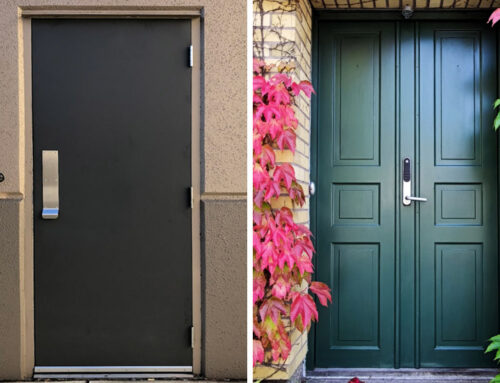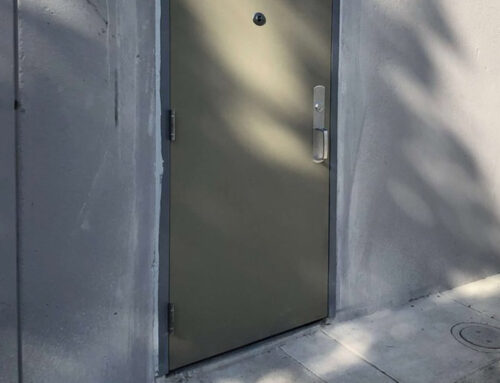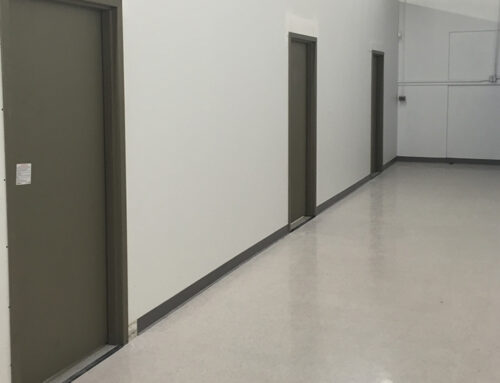You might be right-handed or left-handed. Just like you, all doors, commercial or otherwise, have a “handedness,” too. Door handing is essentially a description of which side of a door has hinges and therefore which side it should swing open from. It is important to understand handedness so that you choose the right doors for you and keep in line with fire codes and other building codes.
Door Handedness Basics
The basic concept of door handedness is that a left-hand door has hinges on the left. A right-hand door has hinges on the right side. But—wait, you can approach the door from two ways, so which way determines the handedness? Whichever side is the keyed side—or the side of the door that can be locked and unlocked. In lieu of physical keys, you can think of the door in terms of secured and unsecured. Typically, the inside of the building or the room is the keyed or the “secured” side.
Some people confuse door handedness because they think the handle is the defining feature, but it is not. Others think the way that the door swings matters for determining handedness. While it is true that doors normally swing to the keyed or “secured” side, usually to the inside, there are doors which buck this trend (and usually for a good reason.)
When in doubt, remember what matters is where the hinges are when you approach a door from the keyed side.
Ready to Make Your Business More Secure?
Commercial Locks and Doors proudly serves businesses large and small throughout the East Bay, including Livermore, Dublin, Fremont, Concord, and more.
What about Double Doors?
When you have a pair of doors next to each other—double doors—is one right-handed and one left-handed? No. Double doors have a whole different method of determining handedness based on the “active leaf” and “inactive leaf.”
In a set of double doors, each door panel is a leaf. The active leaf is the one with a lock installed on it. The inactive leaf does not have locking hardware (although it can have other hardware.) When you’re on the keyed side of the double door, the side that the active leaf is on determines the handedness of the door. Notice that if the active leaf is to your right, the hinges for it are also on the right. It’s technically the same rule as for single doors but a bit more complicated, as the inactive leaf also has hinges (but ignore them!)
What about Reverse Doors?
Reverse doors are ones which push towards the keyed side instead of away from it, then it is a reverse door. Even though it swings differently, you determine the handedness of a reverse door the same way you do standard doors. On the keyed side, whichever direction the hinges are in is the handedness of the door.
Why Does Handing Matter?
If you order a door with the wrong handing, it won’t fit. You can turn it around, but the spot for the hinges and other hardware won’t match up. So, it is essential to choose a door with the right handedness for your purpose, or have your commercial door expert uninstall and reinstall all the door hardware (we don’t recommend this one.)







